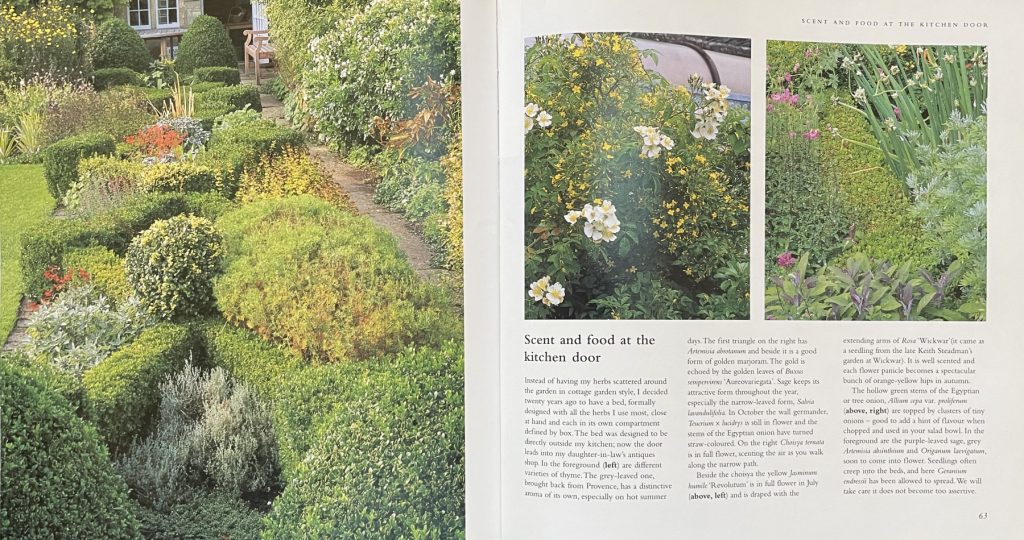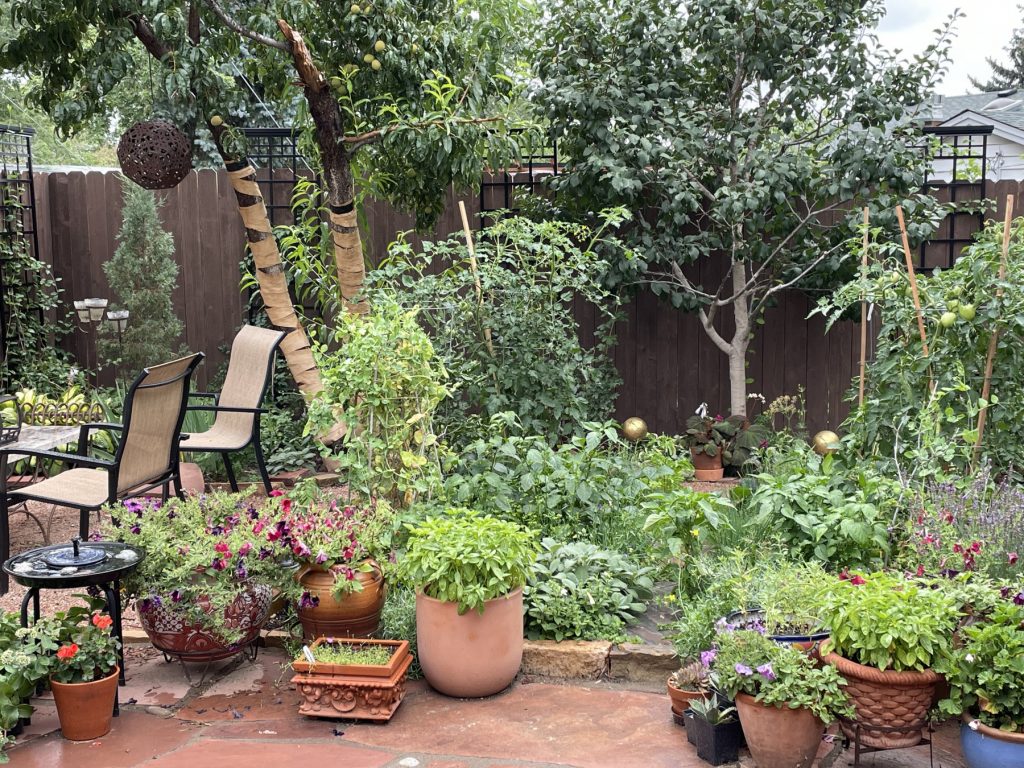Once I had a kitchen garden. It was a large space, surrounded by a trellis fence so that it didn’t appear part of the “proper” garden, because it was a hard-working space, with a small glasshouse in one corner, compost heaps in another, and two long parallel rows of four-foot-wide raised beds. These were not corralled by wooden frames as we see so often now, but simply mounds of earth raised by the addition of copious amounts of well-rotted organic matter. When finished, my garden-help, Ray, remarked in his broad Norfolk burr, “Them look like graves.” He wasn’t too far off.
As expected, since the garden was previously uncultivated soil, we grew more produce than we could consume; my first cabbage was the size of a medicine ball. I made strings of onions and garlic, stored potatoes in sacks, kept apples in the loft and suspended bundles of herbs above the racks. We won awards in the church Harvest Festival.
Now my entire garden in Colorado Springs is a fraction of the size of the English one. But undaunted, this year I carved potager into the back garden. It is fenced to keep out deer and such, but at just ten feet square it fits neatly into space merging the flowers and shrubs, so that it, too, is a decorative element where each inch counts.

Potagers have a long history and take the name from the French practice of creating productive yet decorative gardens close to the kitchen door. I was first introduced to this charming design element by the late Rosemary Verey as we worked together on our book, “The Scented Garden” at her place, Barnsley House. Her garden there was a place of pilgrimage for gardeners from all over the globe, enchanted by the romanticism of the past that imbued her designs and writing. Rosemary was an historian at heart, drawing from her extensive library of old gardening texts the ideas and practices she handed down to us. One of her great sayings — and there were quite a few but this is the one I heard most often – was to “always make the entrance to your garden from the best room of your house.” Easy to say but not practice given much of today’s architecture. Nevertheless, the entrance to Rosemary’s garden, and the one most frequently used by me and her, was from the kitchen along a path lined with the herbs most frequently used in her cooking, jumbled up with scented flowers, perennial and annuals that would seed each year to make a showy yet modest threshold into carefully planned and maintained Barnsley House gardens, which beyond the garden walls included a large and elaborate kitchen garden.

Remembering this abundant utilitarian border, into my 20 square feet, stone-bordered plot I’ve managed to plant French filet beans, jalapeno and mini-bell peppers, snow and snap peas, tarragon, chives, thyme, wild arugula, lavender ‘Phenomenal’ at each corner, and four tomato plants of the 15 I have growing throughout the back and front gardens (what was I thinking!). Three zucchini plants, cucumbers, strawberries are interplanted among the ornamentals, and thus the entire enclosed garden is a potager.

Because of its miniature nature, the plants may not be as productive if given more space, so I may not be able to store much of the harvest, but it helps me to keep the memory of my friend and great lady gardener present. I didn’t mention that are, of course, several rosemary ‘Arp’ bushes planted in the tangle: Because, as we all know, rosemary is for remembrance.
©Ethne Clarke, 2022
The Scented Garden and The Making of a Garden are now out of print but widely available through online booksellers.


